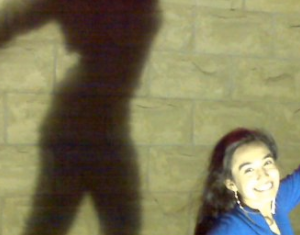Article
Highlight of My Week: Teaching My Kids
ID # 3724
Teaching in my service placement is the highlight of my week.
My students in Mrs. Wilkinsons seventh grade social studies class have exceeded all of my expectations of students their age and constantly surprise me with their understanding and growth. My teaching in Mrs. Wilkinsons class is self-motivated and directly connected to the students learning process. Overall, I am pleasantly pleased with the development and success of my service placement.
Since my teaching in Mrs. Wilkinsons class is jointed with my involvement in Postcards 4 Progress (P4P), my lesson plans this semester have focused on Taiwanese culture. Our two themes for our 4-week lesson models have been/are storytelling and pop music (current theme), so my lessons have/are revolved around Taiwanese storytelling and Taiwanese pop music.
All of my lessons have involved some form of artistic activity (as part of P4Ps artistic expression mission), like acting out a role, drawing, writing, music, etc. For example, one of my lesson plans for the 4th week storytelling unit comprised of 4 activities: 1) the touching/pausing culture role play (same activity we did in class) 2) Description-Interpretation-Evaluation modeling of the role play 3) class reading of Taiwanese article about President Maos reelection and 4) discussion about President Mao and President Obamas similarities and differences.
When I look back at my earlier lessons plans, I can tell my teaching and lesson planning has dramatically improved; instead of looking at pictures of festivals, my lesson plans are digging deeper into more profound global topics like politics and education.
One aspect I am working toward in my service placement is making the classroom a travelling one. I am making an effort to the students to see beyond the surface of culture, like food, festivals, and clothing, and hoping to expose the students to issues of cultural and more importantly, global significance.
For example, I wanted the students to see that President Mao is facing similar circumstances as President Obama such as economic reform and foreign affairs, and that affairs in Taiwan are relatable to what Americans are facing now.
Another aspect of intercultural education I am doing in the classroom is making my lessons circular. This means I am making sure that all of the activities tie together at the end of the lesson and the students can fit the pieces together on their own without my explicit telling.
At the end of the President Mao reading, one student raised his hand and said that the Taiwanese and Chinese relations are similar to the touching/pausing cultures because though they are culturally similar, the two countries treat one another as strangers in conversation detached and narrow-minded to their own opinions. I find these two aspects to make my lessons more interdisciplinary and challenge the students to think intuitively about global interaction.
Hopefully, with my lessons, the students will be products of a global education environment.
The best way I can describe the global education environment currently at AL Stanback Middle School is there. They have cultural fairs, ESL students in classes with regular students, cultural posters in classrooms, and classes that embrace cultural awareness.
However, I feel as if there needs to be a lot more done to improve the global education environment, such as more foreign language classes and native speakers to come lecture to the students. The school has great potential for global education, so all it needs is a few global education administrators to start global competency programs in the curriculum to push the staff and students toward global competency.
What I also wish I could be doing in the classroom is addressing more sticky global issues. Concepts like terrorism, religion, social roles, etc. are difficult to talk about because the CCHS system curriculum shelters the students from such issues. I know the students would take interest in these issues because they are aware that these things are occurring all around them, but school standards shy away from these topics in discussion in hopes to avoid controversy.
However, I feel that addressing these controversial concepts is essential to cultural competency because it would provide a complete scope of culture, rather than just the pleasant and socially discussable topics. It would help dissect negative stereotypes and work toward conflict resolution between culture groups.
I would also like to have the students expressing themselves more through writing. At their age, I feel as if they are afraid to express their true thoughts and feelings to their classmates because they fear they may be judged.
I can relate because during my middle school years, I remember how easily my peers teased a student for their ideas. In this case, I want the students to feel comfortable with their thoughts and feelings, and be able to express them in a safe environment to me.
I want to include more fun writing activities in my lesson plans from now on, and will have to manage my time during teaching more effectively to have a free-write session at the end of each lesson to gain feedback from my students.
***Photos are all released by the permission of students’ parent/guardian.
Created By
Beejal Patel

